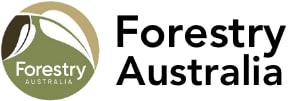
Forest management does not cause extinction
MEDIA RELEASE
8 October, 2020
Ecological forest management protects forest flora and fauna, not a threat
The professional association representing some 1,000 forest scientists, researchers and professional forest land managers, the Institute of Foresters (IFA/AFG), has highlighted there are no forest operations in Australia that have been identified as the reason for any extinctions of forest dwelling flora or fauna.
IFA/AFG President and forest scientist, Bob Gordon said the overwhelming reason for species extinction of fauna in Australia is feral animals such as cats and foxes. Other reasons for flora and fauna species extinction in Australia include, land-use change, invasive species and weeds, unsuitable fire regimes, disease and pathogens as well as mortality agents such as hunting and the collection of eggs and plants.
“Land clearing or land-use change is when forests are converted for example to urban development and agriculture,” Mr Gordon said.
“It is important that land clearing that converts forests to other land uses should not be confused with sustainable forestry – they are two very different activities.
“Sustainable harvesting in Australia’s forests has a very small foot-print and our sustainable forest management sees replanting as well as reestablishment of forests after a harvest operation.
Mr Gordon said the forest sector works very hard to achieve sustainable forest management and that’s why it was important to highlight that no forest operations in Australia have been identified as the reason for any extinctions of flora or fauna.
“Australia’s Regional Forest Agreements are a legal agreement developed 20 years ago to conserve forest biodiversity and provide Australians with a sustainable and ethical timber supply,” Mr Gordon said.
“This is why we are calling for Australians to plant more trees, improve the management of invasive species and feral animals as well as adopt active forest management throughout the nation to respond to our changing climate and bushfire threat.
“If implemented, these initiatives, along with ecological forest management will ensure that our vulnerable forest flora and fauna is persevered, for all Australians to enjoy,” Mr Gordon said.
For those interested in more information on the topic, it can be found here:
- Australia’s State of the Forest Report 2018 https://www.agriculture.gov.au/abares/forestsaustralia/sofr
- Assessment of Australia’s Terrestrial Biodiversity – Chapter 5 Threats to Australian Biodiversity
- Davey, S. M. 2018. “Reporting Australia’s Forest Biodiversity II: Threatened Forest-Dwelling and Forest-Dependent Species.” Australian Forestry 81 (4): 214–30
END
Media contact:
Becher Townshend
Font PR
0418 370 661

